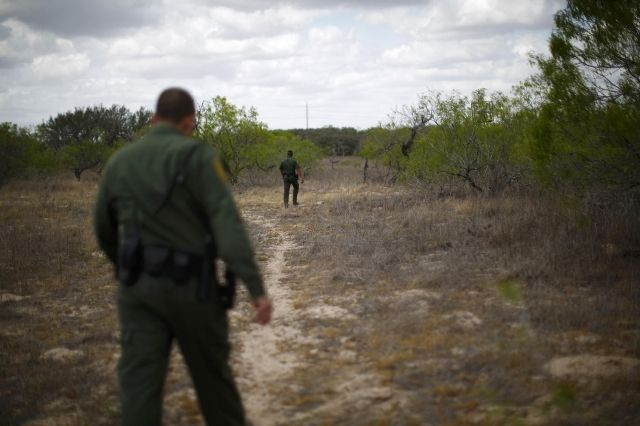
The U.S. Border Patrol doesn't need fences or a "surge" of agents, sheriffs along the U.S.-Mexico border say, just changes in strategy and better technology. In a report published on Thursday, nearly all 17 sheriffs interviewed told USA Today that they didn't think the immigration overhaul passed by the Senate in June -- which would allot $46 billion toward increased border security, including 20,000 new Border Patrol agents, another 367 miles of double-layered fences, and $3 billion worth of surveillance technology like the VADER drone aircraft system -- really addressed the problems that exist in policing the border. Only one of the 17 said he thought the new agents were necessary; more said they liked the idea of additional fences, but most of them said the cost and remoteness of much of the border made it unfeasible.
Instead, they agreed, they should position Border Patrol agents differently. The sheriff of Hudspeth County, Texas, Arvin West, told USA Today that the 18,500 agents who work the border area now are "tripping over themselves". But, he added that that's partly because they're in the wrong places: not right at the border with Mexico, but rather miles inland. The sheriff, who has served for 30 years in Hudspeth County, acknowledged that such a strategy would make for more dangerous work, as the terrain right at the border is often wild and easily traversable. "But put them on the damned border," he said. "In some places here, they are 60, 70 miles away. It's going to take some (courage) to go down there. When you first get down there ... you're going to (tick) the drug dealers off. But once they understand that you held the line, they're going to look for weaker spots further down the line."
Customs and Border Protection officials retort by saying they take the "layered" approach to stationing Border Patrol agents -- clustering them at highway checkpoints further inland while leaving more remote areas unpatrolled -- because that's actually the most effective fashion. "Checkpoints deny major routes of egress from the borders to smugglers intent on delivering people, drugs and other contraband to the interior of the United States and allow the Border Patrol to establish an important second layer of defense," said Michael Friel, spokesman for the U.S. Customs and Border Protection.
Other sheriffs seemed to agree, emphasizing the extent to which people cross right through ports of entry. Some use false documents; others, drug cartels are known to hover near border crossings until officers change shifts, when their drug-filled cars converge on the suddenly short-staffed officers at once. As such, some of the sheriffs said more officers should be hired specifically to man the border crossings.
RELATED: 'Border Surge' Could Cut Inflow Of Undocumented By Half, Says Congressional Budget Office
© 2025 Latin Times. All rights reserved. Do not reproduce without permission.




